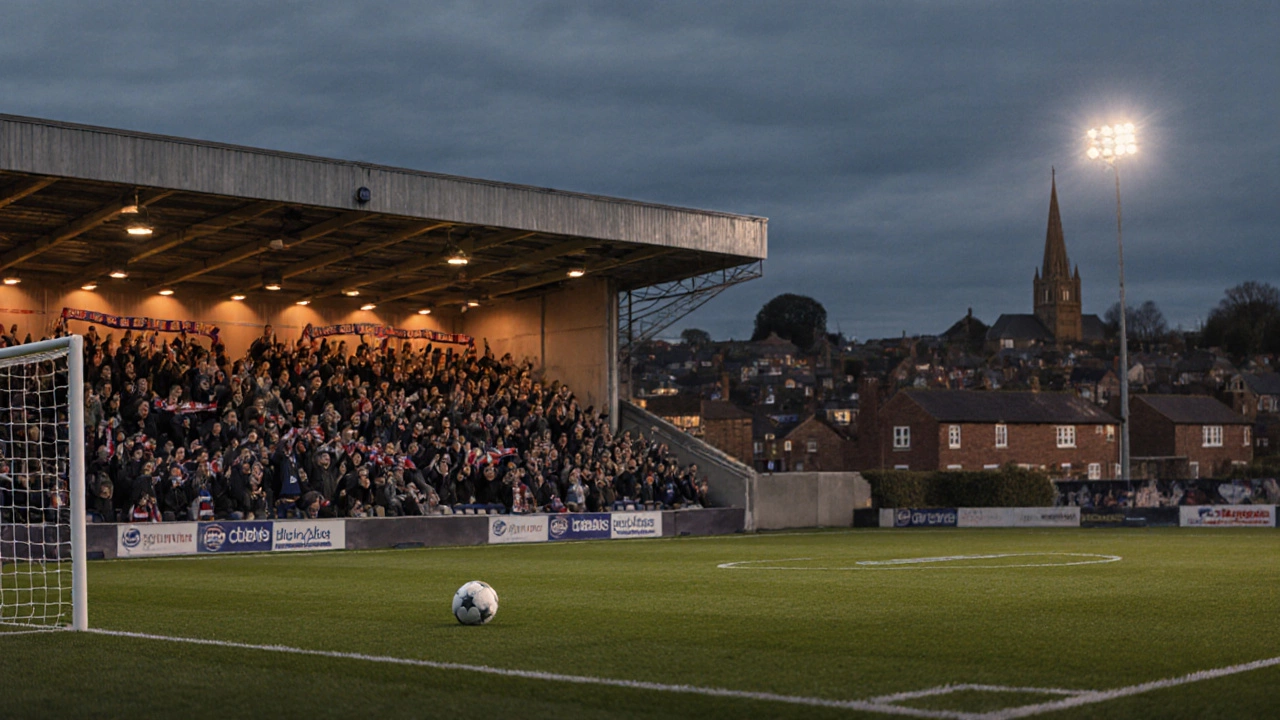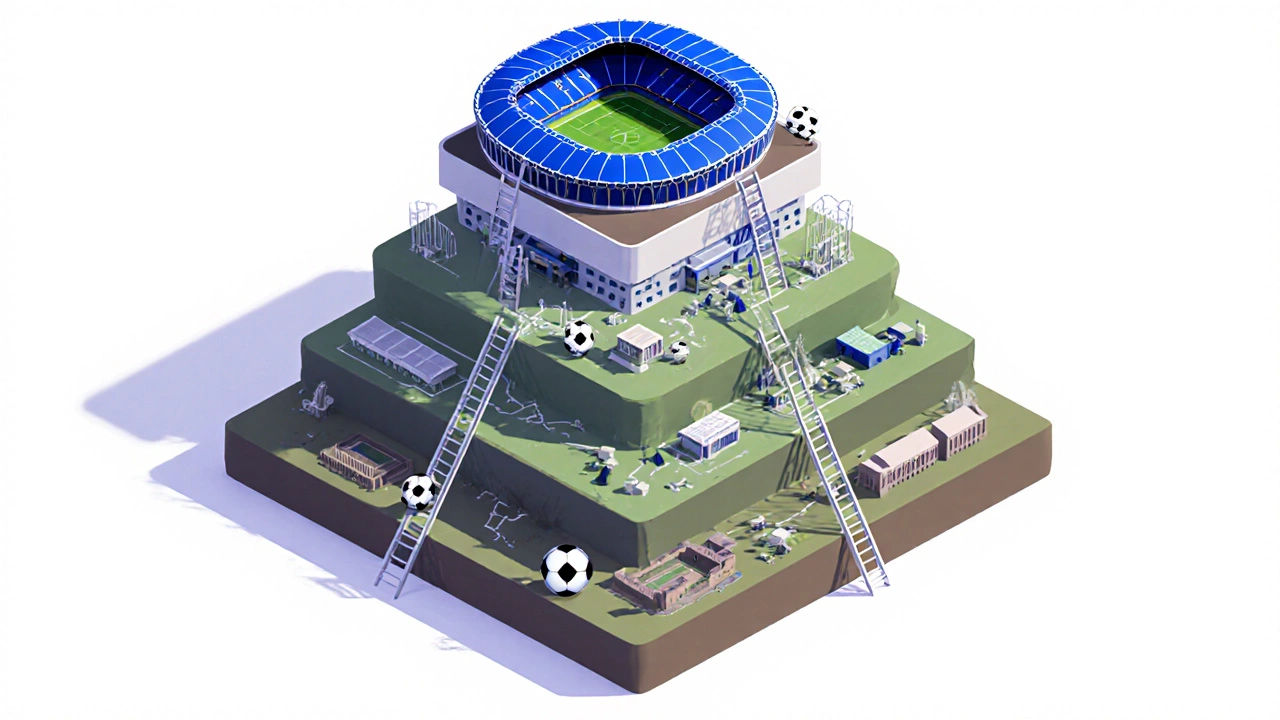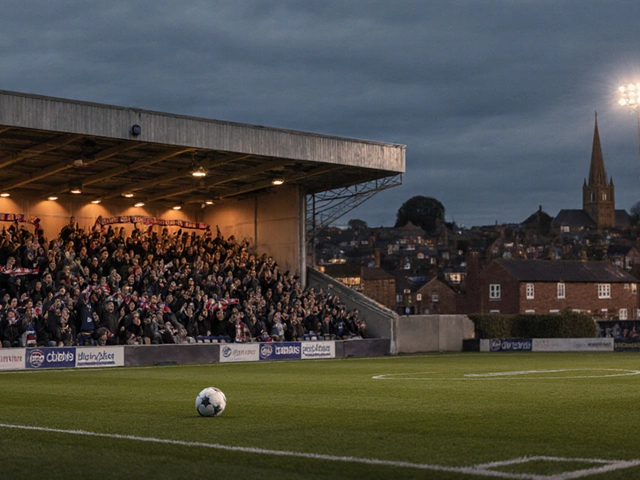Is League Two the Lowest League in English Football? Full Pyramid Explained

English Football Pyramid Explorer
League Details
League Two sits at the fourth tier of English football, with 24 clubs competing each season. It's part of the English Football League (EFL) and consists of full-time professional clubs.
Key facts:
- Top 3 teams earn automatic promotion to League One
- Teams finishing 4th-7th compete in playoffs for 1 promotion spot
- Bottom 2 teams are relegated to the National League
- Clubs must meet EFL licensing criteria for stadium, finances, and youth development
League Two is not the lowest league in English football. It sits at tier 4, with 4 tiers below it including the National League (tier 5) and multiple regional leagues at tiers 6-8.
When you hear "League Two" you might picture a modest, regional competition and wonder if it’s the bottom rung of English football. The short answer is no - there are several steps below it, each with its own history, clubs, and stakes. This guide breaks down where League Two sits, what leagues lie beneath, and how promotion and relegation keep the whole system moving.
Quick Facts at a Glance
- League Two is the fourth tier of English football.
- It sits below Premier League, Championship, and League One.
- 24 clubs compete each season; the bottom two are relegated.
- Below League Two is the National League (fifth tier) and then regional divisions.
The English Football Pyramid in One Picture
England’s football structure works like a ladder, with promotion and relegation linking each rung. At the top sits the Premier League is the country’s elite division, featuring 20 clubs that battle for the title, TV revenue, and global fame. One step down is the Championship - a 24‑team league that feeds the Premier League via promotion playoffs. The third rung is the League One, also 24 clubs, where the competition is fierce for a chance to move up. Finally, the fourth tier is League Two, the focus of this article, which hosts 24 clubs fighting to avoid the drop.
Where League Two Fits in the Pyramid
League Two is part of the English Football League, commonly abbreviated as the EFL. The EFL manages the three tiers below the Premier League, providing a professional framework, broadcast deals, and standardized rules. Because it is still within the EFL, clubs in League Two enjoy professional contracts, full‑time staff, and a share of national sponsorship money.

Leagues Below League Two
Below the EFL’s fourth tier lies the National League, the fifth level of the pyramid. It is a single national division with 24 clubs, a mix of full‑time professional and part‑time semi‑professional outfits. Relegated clubs from League Two join the National League, while the top two National League clubs earn promotion each season.
Under the National League, the pyramid splits regionally into two parallel divisions:
- National League North covers clubs from the north of England and the Midlands.
- National League South serves clubs from the south and South‑West.
Both North and South sit at the sixth tier, each with 22‑24 teams. The champions of each automatically rise to the National League, while a playoff decides two more promotion spots.
Beyond tier six, the system fans out into numerous regional leagues-e.g., the Northern Premier League, Southern League, and Isthmian League-collectively forming the seventh and eighth levels. These leagues are administered by the Football Association (FA), which oversees the whole pyramid, sets eligibility rules, and organizes cup competitions.
Promotion & Relegation Mechanics
Every season, clubs move up or down based on their final league position:
- From League Two to League One: The top three clubs gain automatic promotion. Teams finishing 4th‑7th enter playoffs for a fourth promotion slot.
- From League Two to National League: The bottom two clubs are relegated. Their places are taken by the National League champion and the playoff winner.
- From National League to League Two: Two clubs rise each year, keeping the flow of clubs between professional and semi‑professional tiers.
This fluid movement means that even clubs that have spent decades in the EFL can find themselves in the National League if they finish poorly, while ambitious non‑league sides can climb to the professional ranks.
Why League Two Isn’t the Bottom
Several reasons keep League Two above the lowest levels:
- Professional Status: All clubs in the EFL operate under professional contracts, whereas many clubs below are part‑time.
- Financial Safeguards: The EFL distributes TV revenue, sponsorship, and parachute payments to clubs, offering a financial safety net that non‑league clubs lack.
- Infrastructure Requirements: To retain an EFL licence, clubs must meet stadium standards (e.g., seating capacity, floodlights) that regional leagues do not enforce.
- Regulatory Oversight: The EFL enforces strict licensing, financial reporting, and player registration rules, creating a higher bar for competition.
These factors create a clear demarcation between the professional fourth tier and the semi‑professional world below.

Recent Changes & What the Future Holds
In the 2023‑24 season, the FA approved a restructuring that added an extra promotion spot from the National League North/South, aiming to reduce the bottleneck at tier 6. Additionally, the EFL introduced a “flexible salary cap” for League Two clubs to help them stay financially viable while remaining competitive.
Looking ahead, discussions about expanding the National League to 28 clubs have surfaced, which could affect the number of relegated teams from League Two. Fans should keep an eye on official FA announcements, as any shift will directly influence how low the “lowest league” truly is.
Comparison Table: English Football Pyramid (Top8Tiers)
| Tier | League | Number of Clubs | Professional / Semi‑Professional | Promotion To | Relegation To |
|---|---|---|---|---|---|
| 1 | Premier League | 20 | Full‑time Professional | Championship | Championship |
| 2 | Championship | 24 | Full‑time Professional | Premier League (2automatic+playoff) | League One |
| 3 | League One | 24 | Full‑time Professional | Championship | League Two |
| 4 | League Two | 24 | Full‑time Professional | League One | National League (2clubs) |
| 5 | National League | 24 | Mixed (Professional & Semi‑Professional) | League Two (2clubs) | National League North / South |
| 6 | National League North / South | 22‑24 each | Mostly Semi‑Professional | National League (2clubs) | Regional Leagues (e.g., Northern Premier) |
| 7 | Northern Premier / Southern / Isthmian | ~22 each | Semi‑Professional | National League North / South | County Leagues |
| 8 | County Leagues (various) | Varies | Amateur / Semi‑Professional | Regional Leagues | Bottom of the Pyramid (no relegation) |
Key Takeaways
League Two is not the lowest league; it sits at tier4, above the National League and a host of regional divisions. The English football pyramid is a dynamic system where clubs can rise from local county leagues to the Premier League, and vice‑versa, through promotion and relegation.
Frequently Asked Questions
Is League Two a professional league?
Yes. All clubs in League Two operate under full‑time professional contracts and are governed by the English Football League, which provides TV revenue and sponsorship deals.
How many teams are relegated from League Two each season?
Two clubs finish at the bottom of the 24‑team table and drop down to the National League.
What league sits directly below League Two?
The National League, also known as the fifth tier, is the immediate step down from League Two.
Can a club from the National League get promoted to League Two?
Yes. The National League champion earns automatic promotion, and a second spot is decided through playoffs involving the teams finishing 2nd‑7th.
Are there any leagues below the National League North/South?
Below tier6 are the regional leagues - Northern Premier, Southern, and Isthmian - which form tier7, followed by county leagues at tier8 and beyond.
What determines if a club can stay in League Two?
Performance on the pitch (finishing above the bottom two) and meeting the EFL’s licensing criteria - stadium standards, financial reporting, and youth development - are essential.

